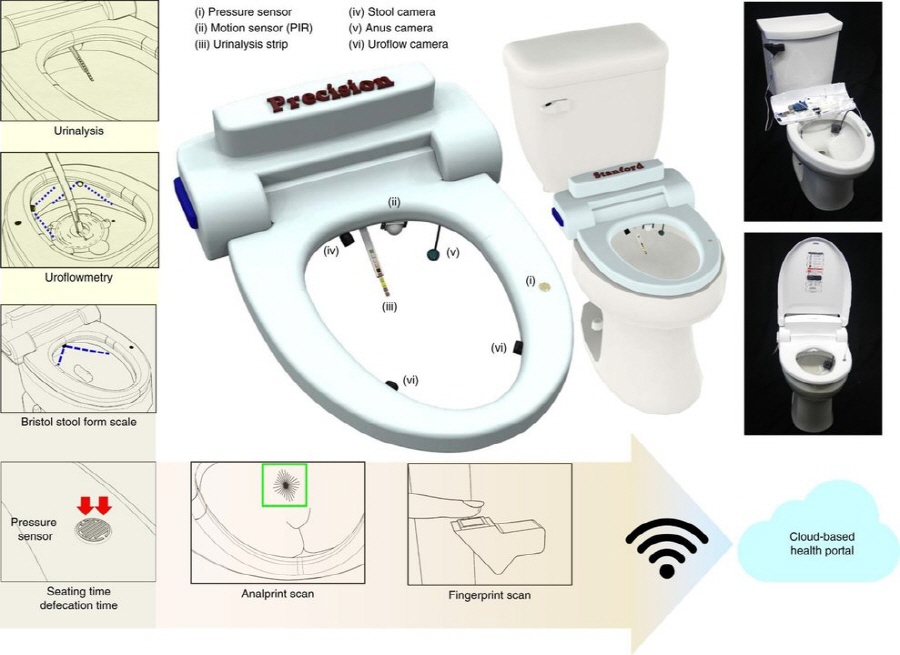
A research team at Stanford University developed a smart toilet that records health status in the bowel and analyzes it with AI. It has a fingerprint authentication sensor that identifies an individual. It even includes authentication methods you haven’t seen before. It is anal authentication.
Looking at the images described in the paper, devices such as pressure sensors, motion sensors, and buttocks cleaning nozzles for starting toilet equipment are used for urine tests and strips, video recording toilet cameras for measuring stool shape, anal cameras for anal authentication, and urine flow cameras. Built. Of course, data is stored in the cloud via Wi-Fi. There is a fingerprint sensor on the drain lever, so it can perform two-step authentication after the anus.
The amount or volume of this toilet excrement is measured, and the shape is classified through deep learning, and each data is encrypted and uploaded to the cloud server. The expert analyzes and checks the health status. Multiple authentication methods can be added to reliably identify individuals and continuously monitor multiple patients.
Urine is transparent, yellow, and hematuria, as well as glucose and red blood cell counts, and feces provide useful information for detecting conditions such as chronic constipation, irritable bowel syndrome, prostate cancer, and kidney failure.
The research team also explains that although there are biometric systems such as fingerprints and irises, each person’s anus is different and uses it for authentication. Salvador Dali, a genius artist born in Spain, revealed that there were 35 to 37 wrinkles in the anus and suggested whether it was unique like fingerprints. It is said that the characteristics of the running wrinkles are not related to life and social class, and are genetic. It is explained that this study also reflected his art. Related information can be found here .

